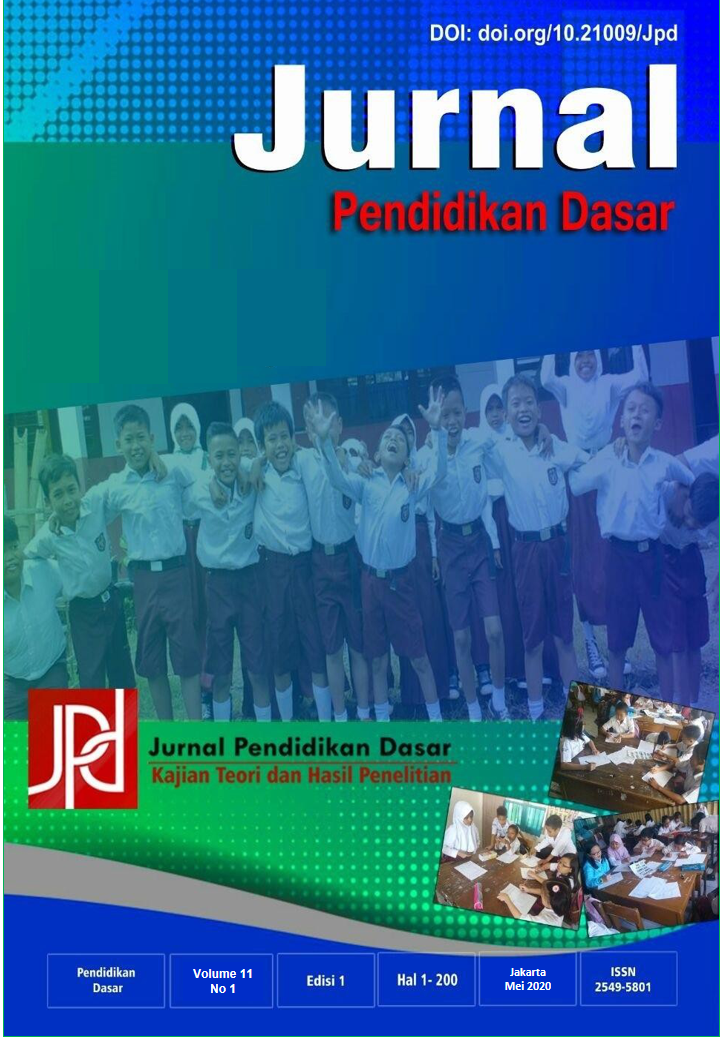STRATEGI STRATEGI PEER LESSONS SOLUSI TERHADAP MASALAH KEMAMPUAN BERPIKIR KRITIS DAN KETERAMPILAN KOMUNIKASI KELAS V MADRASAH IBTIDAIYAH MUHAMMADIYAH
DOI:
https://doi.org/10.21009/jpd.v11i1.14103Keywords:
peer lessons, critical thinking ability, communication skillsAbstract
This research is motivated by students' critical thinking skills and communication skills that have not been maximally developed in the learning process. During this time, the implementation of learning is dominated by the use of lecture methods whose activities are more centered on the teacher. This research uses a quantitative approach, a quasi-experimental method with the Nonequivalent Control Group design. The population in this study were all sample students in class V with 41 students. Data collection tools used were test questions, observation sheets, questionnaires, and documentation. Based on the analysis of the data obtained the following research questionnaire: (1) students are still experiencing difficulties in answering questions that require the analysis process. (2) students are still unable to identify problems related to the surrounding environment (3) students have not been able to have active discussions in the learning process, so that it can be concluded that to answer the problems above it is necessary to have a strategy that is an active learning strategy type of peer lesson can be applied as one strategies in learning Natural Science in the Water Cycle Material because based on the documentation of student learning outcomes the material is very difficult for students to understand
References
Abdullah Bin Muhammad Bin Abdurrahan, (2017) Tafsir Ibnu Katsir ( terjemahan M. Abdul Ghoffar E.M). Jakarta: Pustaka Imam Asy-Syafi’i. (Edisi asli diterbitkan tahun 1994 oleh Muassasah Dar al-Hilal Kairo).
Arisan Candra Nainggolan, (2018) Perbedaan Hasil Belajar Matematika siswa yang Menggunakan Strategi Pembelajaran aktif Tipe Peer Lessons dengan Strategi Pembealjaran Ekspositori, Jurnal pendidikan matematika dan terapan volume 4 No 1 tahun
Bassham, G., Irwin, W., Nardone, H., & Wallace, J. M. (2011) Critical thinking a student’s introduction (4th ed.). Singapore: McGraw Hill.
Candra Arisan Naigolan,(2018) Perbedaan Hasil Belajar Matematika Siswa yang Menggunakan Strategi Pembelajaran Aktif Tipe Peer Lessons Dengan Strategi Pembelajaran Ekspositori, Jurnal Pendidikan Matematika dan Terapan Vol 4 No 1
Cyntia Melawati, Maria Paristiowati, Suhartono,(2014) analisis Kemampuan Komunikasi dan Kerja Sama Siwa pada Pembelajaran Kimia Melalui Model Pembelajaran Kooperatif Tipe TAI (Team Assisted Individualization), JRPK Vol. 4 No. 1 Desember
Erni Hastuti, (2011) Sifat Kritis Membangun Keterampilan Berkomunikasi, UG Jurnal ISSN:19784783 Volume 5 No 11. September.
Diner Nur Inten, (2017) Pengembangan Keterampilan Berkomunikasi anak Usia Dini melalui Metode Bermain Peran, Jurnal Media Tor Vol 10 (01) Juni
Deporter Bobbi, Mike Hernacki,(2011) Quantum Learning, Bandung : Kaifa PT Mizan Pustaka Anggota IKAPI.
Dessy Triana Relita, Anna Marganingsih, Utari Ilhayati Ningsih, (2017)Penerapan Strategi Pembealajaran Aktif Tipe Peer Lessons Terhadap Kemampuan Berpikr Kritis Siswa, Jurnal Sosio Didaktika: Social Science Education Journal, 4 (2), 2017
Sugiyono. (2008). Metode Penelitian Kuantitatif. kualitatif dan R&D. Bandung: Alfabeta.
Zaini Hisyam,Beramawy Munthe, Sekar Ayu Aryani, (2011) Strategi Pembelajaran Aktif, Yogyakarta:CTSD (Center for Teaching Staff Development) Universitas Islam Negeri Sunan Kalijaga.
Downloads
Published
How to Cite
Issue
Section
License
Jurnal Pendidikan Dasar





















